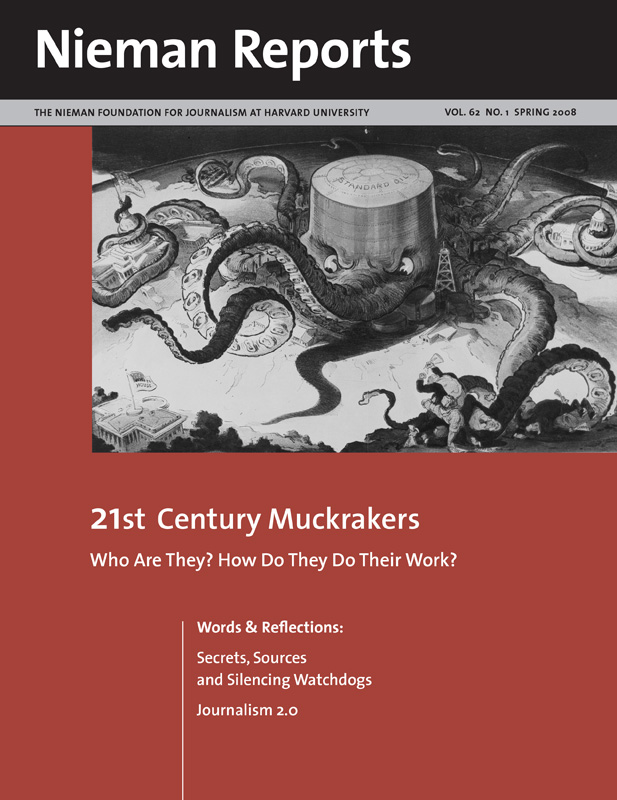Our visual journey moves from the late 19th and early 20th century muckraking era to the Watergate coverage of the early 1970’s, which swept into newsrooms a wave of young journalists hoping to do watchdog reporting during a time when newspapers and network TV news were thriving.
We thank author Ann Bausum for generously supplying us with several Library of Congress images that appeared in her book, “Muckrakers,” and for her willingness to let us borrow the timeline compiled for her book, and we thank National Geographic, the book’s publisher, for allowing us to reprint the timeline.
Our gratitude extends to The Associated Press for giving us the ability to reprint several of the more recent watchdog images, and to the Newseum—Karen Wyatt, Director of Collections and Visual Resources, and Peggy Engel, Managing Editor, in particular—for locating and granting permission for the use of memorable images from its collection.
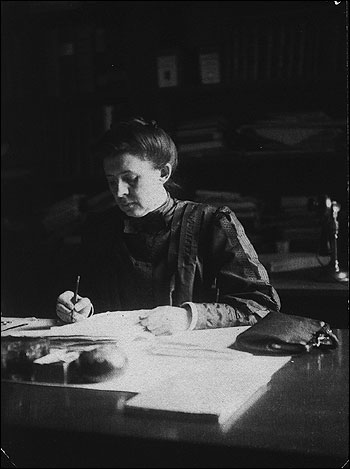
Muckraker Ida Tarbell (1857-1944). The Ida M. Tarbell Collection, Pelletier Library, Allegheny College.

In 1890 Jacob Riis (1849-1914) published “How the Other Half Lives,” including his photograph of children sleeping on the streets of New York. Photo courtesy of Library of Congress.

Ida M. Tarbell grew up near oil derricks in Western Pennsylvania and later investigated the practices of the Standard Oil Company for McClure’s Magazine in November 1902. Photo courtesy of Library of Congress.
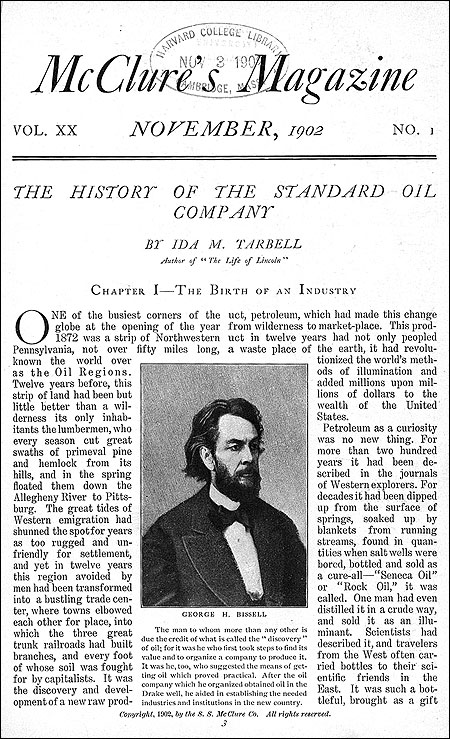
In this issue of McClure’s Magazine, the first installment of Ida M. Tarbell’s “The History of the Standard Oil Company” appeared.
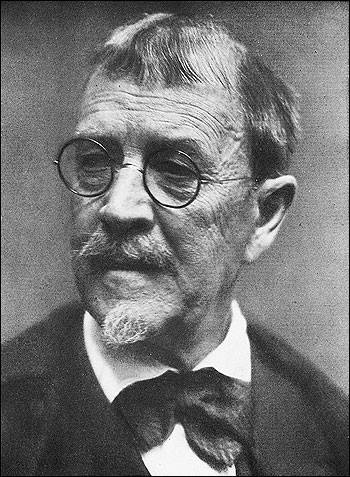
Muckraker Lincoln Steffens (1866-1936). Photo by Edward Weston.
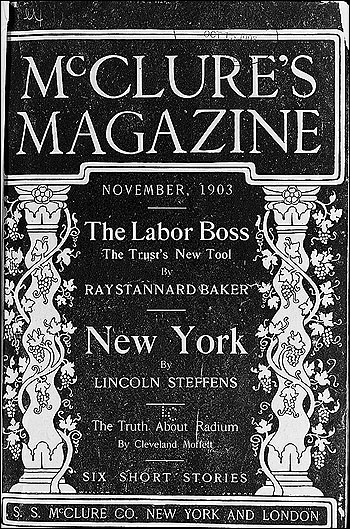
McClure’s Magazine, November 1903, featuring an article by Lincoln Steffens.

On assignment for the journal Appeal To Reason, Upton Sinclair visited meatpacking firms in Chicago and wrote about his findings in novelistic form in his 1906 book, “The Jungle.”
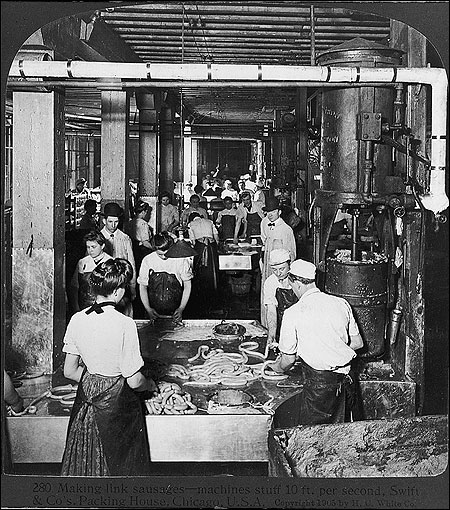
Making sausage in a Chicago meat factory was a topic of Upton Sinclair’s writing. Photo courtesy of Library of Congress.
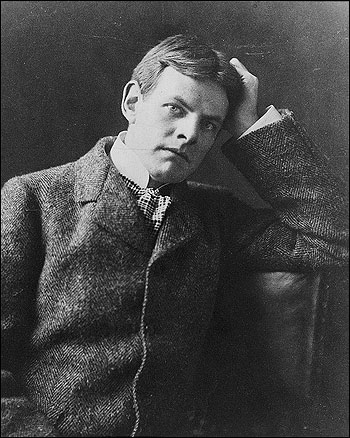
David Graham Phillips (1867-1911). In 1906 Cosmopolitan Magazine published “Treason of the Senate,” a nine-part series exposing patterns of corruption among senators. Photo courtesy of Library of Congress.

In 1906, Collier’s published E.W. Kemble’s “Death’s Laboratory,” an investigative article about the sale of alcohol and chemical-laced medicines. Courtesy of Library of Congress.
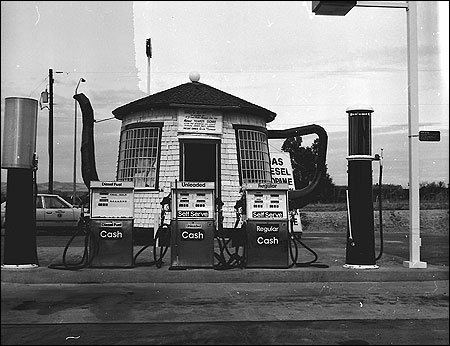
In 1929, St. Louis Post-Dispatch reporter Paul Y. Anderson won the Pulitzer Prize for Reporting for “his highly effective work in bringing to light” hidden details of the Teapot Dome oil-lease scandal. A gas station owner in Zillah, Washington, was so outraged by the corrupt dealmaking that he built his station to look like a teapot in protest. Courtesy of the Office of Archaeology and Historic Preservation, Washington State Department of Community Development.
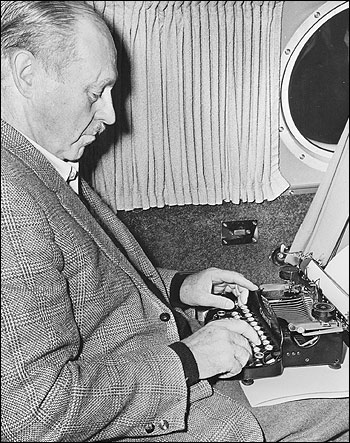
In 1931, Drew Pearson (1897-1969) published “Washington Merry-Go-Round,” which became the name for his Washington Post column in which he exposed political corruption. LBJ Library and Museum/Courtesy Newseum.
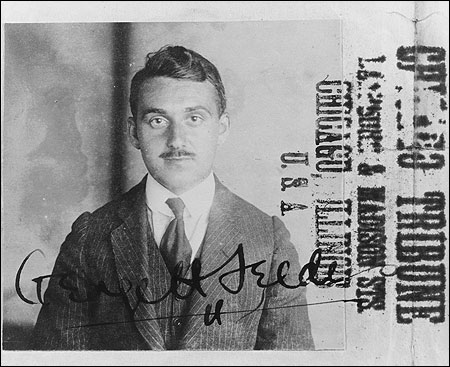
George Seldes (1890-1995). In 1938 he founded a weekly newspaper, “In Fact,” in which he wrote frequently about the hazards of smoking cigarettes during a time when other publications refused to print such stories. Loren Ghiglione/Courtesy Newseum.

In 1946, Stetson Kennedy’s book “Southern Exposure” was published, revealing the circumstances of life for blacks in the American South.
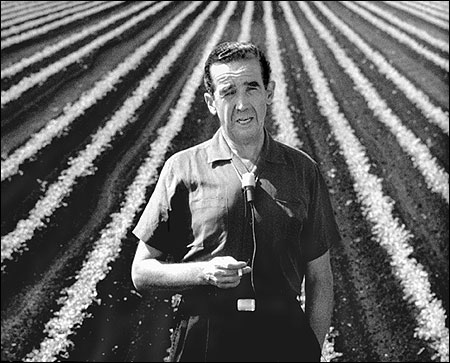
Edward R. Murrow reported “Harvest of Shame” about the conditions of migrant farm workers. This “CBS Reports” program was originally shown on Thanksgiving evening, 1960. Film image courtesy of CBS Photo Archive, CBS Worldwide, Inc. ©
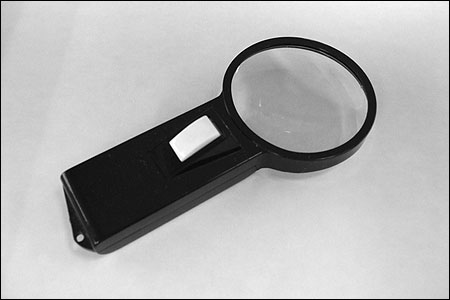
A magnifying glass used by I.F. Stone (1907-1989). Photo from the Newseum collection/Courtesy Newseum.
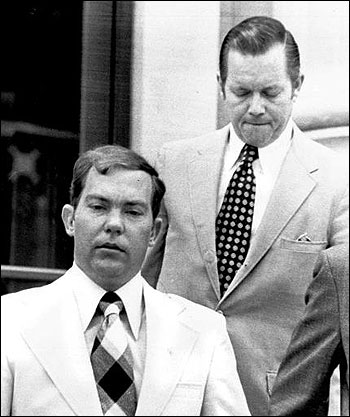
In 1969, Seymour Hersh’s reporting about the killing of civilians in My Lai, South Vietnam, led to the 1971 conviction of platoon leader Lt. William Calley (in front). Photo by Joe Holloway, Jr./Courtesy of The Associated Press.

The Washington Post won the 1973 Pulitzer Prize for Public Service for its investigation of the Watergate scandal, led by reporters Bob Woodward, right, and Carl Bernstein. Photo courtesy of The Associated Press.
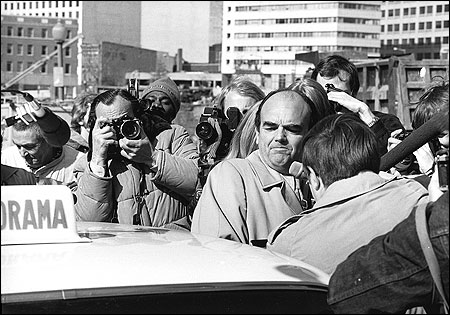
Reporting by Bob Woodward and Carl Bernstein in The Washington Post led to the 1975 conviction of John D. Ehrlichman, a key figure in the Watergate scandal. Photo courtesy of The Associated Press.
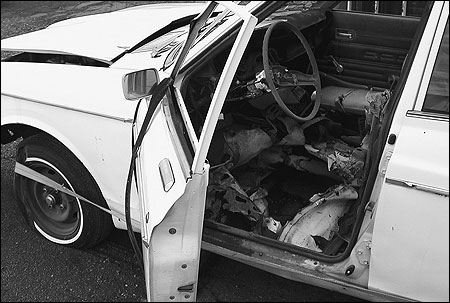
On June 2, 1976, Arizona Republic reporter Don Bolles was gravely wounded when his car was dynamited; he died 11 days later. He had been investigating land fraud and organized crime. David Heller/Courtesy Newseum.
We thank author Ann Bausum for generously supplying us with several Library of Congress images that appeared in her book, “Muckrakers,” and for her willingness to let us borrow the timeline compiled for her book, and we thank National Geographic, the book’s publisher, for allowing us to reprint the timeline.
Our gratitude extends to The Associated Press for giving us the ability to reprint several of the more recent watchdog images, and to the Newseum—Karen Wyatt, Director of Collections and Visual Resources, and Peggy Engel, Managing Editor, in particular—for locating and granting permission for the use of memorable images from its collection.

Muckraker Ida Tarbell (1857-1944). The Ida M. Tarbell Collection, Pelletier Library, Allegheny College.

In 1890 Jacob Riis (1849-1914) published “How the Other Half Lives,” including his photograph of children sleeping on the streets of New York. Photo courtesy of Library of Congress.

Ida M. Tarbell grew up near oil derricks in Western Pennsylvania and later investigated the practices of the Standard Oil Company for McClure’s Magazine in November 1902. Photo courtesy of Library of Congress.

In this issue of McClure’s Magazine, the first installment of Ida M. Tarbell’s “The History of the Standard Oil Company” appeared.

Muckraker Lincoln Steffens (1866-1936). Photo by Edward Weston.

McClure’s Magazine, November 1903, featuring an article by Lincoln Steffens.

On assignment for the journal Appeal To Reason, Upton Sinclair visited meatpacking firms in Chicago and wrote about his findings in novelistic form in his 1906 book, “The Jungle.”

Making sausage in a Chicago meat factory was a topic of Upton Sinclair’s writing. Photo courtesy of Library of Congress.

David Graham Phillips (1867-1911). In 1906 Cosmopolitan Magazine published “Treason of the Senate,” a nine-part series exposing patterns of corruption among senators. Photo courtesy of Library of Congress.

In 1906, Collier’s published E.W. Kemble’s “Death’s Laboratory,” an investigative article about the sale of alcohol and chemical-laced medicines. Courtesy of Library of Congress.

In 1929, St. Louis Post-Dispatch reporter Paul Y. Anderson won the Pulitzer Prize for Reporting for “his highly effective work in bringing to light” hidden details of the Teapot Dome oil-lease scandal. A gas station owner in Zillah, Washington, was so outraged by the corrupt dealmaking that he built his station to look like a teapot in protest. Courtesy of the Office of Archaeology and Historic Preservation, Washington State Department of Community Development.

In 1931, Drew Pearson (1897-1969) published “Washington Merry-Go-Round,” which became the name for his Washington Post column in which he exposed political corruption. LBJ Library and Museum/Courtesy Newseum.

George Seldes (1890-1995). In 1938 he founded a weekly newspaper, “In Fact,” in which he wrote frequently about the hazards of smoking cigarettes during a time when other publications refused to print such stories. Loren Ghiglione/Courtesy Newseum.

In 1946, Stetson Kennedy’s book “Southern Exposure” was published, revealing the circumstances of life for blacks in the American South.

Edward R. Murrow reported “Harvest of Shame” about the conditions of migrant farm workers. This “CBS Reports” program was originally shown on Thanksgiving evening, 1960. Film image courtesy of CBS Photo Archive, CBS Worldwide, Inc. ©

A magnifying glass used by I.F. Stone (1907-1989). Photo from the Newseum collection/Courtesy Newseum.

In 1969, Seymour Hersh’s reporting about the killing of civilians in My Lai, South Vietnam, led to the 1971 conviction of platoon leader Lt. William Calley (in front). Photo by Joe Holloway, Jr./Courtesy of The Associated Press.

The Washington Post won the 1973 Pulitzer Prize for Public Service for its investigation of the Watergate scandal, led by reporters Bob Woodward, right, and Carl Bernstein. Photo courtesy of The Associated Press.

Reporting by Bob Woodward and Carl Bernstein in The Washington Post led to the 1975 conviction of John D. Ehrlichman, a key figure in the Watergate scandal. Photo courtesy of The Associated Press.

On June 2, 1976, Arizona Republic reporter Don Bolles was gravely wounded when his car was dynamited; he died 11 days later. He had been investigating land fraud and organized crime. David Heller/Courtesy Newseum.
